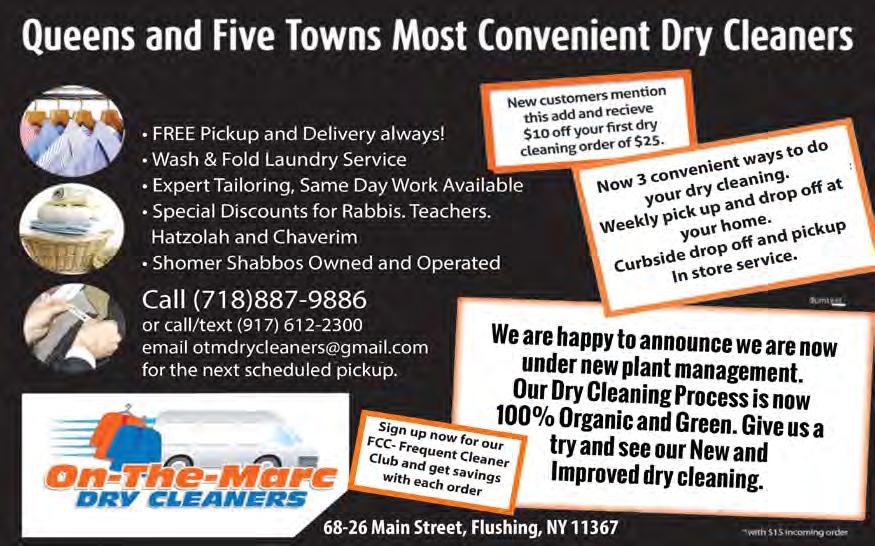
6 minute read
Pain is Good? by Dr. Deb Hirschhorn
Dr. Deb
Pain is Good?
By Deb Hirschhorn, Ph.D.
Iwas reading Steven Stosny the other day, and he said something profound. He has been working for decades on helping people who’ve been not merely angry, but sometimes enraged, to feel compassion.
This is no easy matter because highly angry people often don’t feel anything else but the anger. Their goal is to not feel other emotions because if they did, they’d hurt too much, way too much. (That is why you’ll occasionally hear about murder-suicides. The murderer will then feel the enormity of pain from what he did – usually it’s a he – and will not be able to tolerate it anymore.)
Of course, if you want to ask the logical question – so why couldn’t he just feel the pain first so he wouldn’t have to kill two people – the answer is that feelings were blocked. Quite literally. If you took a brain scan it would look as though the brain were not functioning.
Getting back to Stosny, what he said is that pain is a gift. If used properly, it tells us something is terribly wrong and needs fixing. He pointed out that when an Alaskan comes into the house to warm up from the cold, his limbs will start to hurt as they defrost. But the Inuit, the native people of that region, say that this pain is good because if their limbs don’t hurt, that means it’s too late for them. The limbs are dead.
In fact, Stosny says that the opposite of pain is absolutely not, not for one minute, pleasure. It’s numbness. Nothing. And that’s not good. That’s not something we would ever want because if we felt nothing we would not be alive. Or we would be the walking dead. Like all the people who use escape methods to not be fully alive.
The trick is to read the message that pain offers so that we can immediately take corrective action.
We are not supposed to suffer.
Let’s look at options.
Symptoms
If you have the following issues: • Anger unexpectedly flares up, out of your control, rather often • You have a lack of self-esteem or self-care; putting yourself down • You feel easily offended or mistreated, especially when those who
“do” it say that it wasn’t intended • You are unable to get your message across to your spouse • You and your spouse don’t listen to each other • You don’t feel respected in the relationship • You feel neglected in the relationship • You argue with each other a lot and
it gets worse and worse • You are thinking of divorce • You feel you have nothing in common
Then you should consider my 9-week Love Yourself program. It is an intensive hybrid of group and personal coaching and 1:1 therapy. I put together the key elements in it to cover everything couples complain about. Here they are:
Love Yourself Program *Inner Authority because you are taught specifically how to know what you feel, want, and need – and how to articulate it; *Emotional Agility because you have a host of gold-standard approaches to annihilate triggers; *Intentional Self-Adoration – which is not selfish or narcissistic – because you will learn how to love and adore your real Self, possibly for the first time;
*Compassionate Honesty because you will also learn how to speak your truth in a way that does not hurt but helps the relationship to deepen.
These four pillars of my program include both “Top-Down” and “Bottom-Up” approaches to healing.
Top-Down is the kind of therapy we are used to: talking. The “top” is the cerebral cortex which is the thinking part of our brain. We make decisions with our cortex, we analyze, and we plan. The problem is that sometimes our emotions get the best of us.
Our emotions are manufactured not only in the brain, but in our bodies. According to Raphael Kellman, M.D., our microbiome – the bacteria in our gut – manufacture the serotonin we need to fight depression! This is part of the “Bottom-Up” approach to treatment (but not part of my program. I leave that to the nutritionists).
The part of the “Bottom-Up” approach that therapists engage in has to do with anything that requires our thinking brain to be quiet and uses the rest of our body’s experience to help us heal –meditation, guided imagery, mindfulness, relaxation, and other body work.
All of the material I’m describing is on my website and you will get Lifetime access to it. However, during the nine weeks of the program, you will have 24/6 text message access to me as well. Literally. In addition, there are 18 in-depth group coaching calls, regular bi-weekly one-to-one private therapy sessions to help you over the rough spots unless you want or need more. This is the support aspect of the program which is superb,
personal, and goes beyond any other therapy or coaching program that I am aware of.
What there will not be is blamefests of finger pointing and exhausting going over the things that each person said that hurt. Why? Because we are not ready for conversations until you feel solid and strong inside, that Inner Authority that I describe above; and you are past being triggered, that’s the Emotional Agility; you cannot be shaken by a remark that goes below the belt any more, which is your Intentional Self-Adoration; and you are so past resentment and so full of compassion that you can have a rational conversation filled with Compassionate Honesty.
You need to complete the course first to get to that place. All four components work together.
The investment for the program is way less per person than buying a 10 year old Honda Civic! But it is far more valuable because you will be restoring yourself to yourself, something an old car cannot do. And that, of course, paves the way for the marriage to get back on track.
Trauma Is Different
Now, what I’ve discovered is that if a person is suffering from trauma, this program may or may not be sufficient to heal. It is an individual matter. A person suffering from trauma may very well do better with EMDR, which is a personalized, one-to-one therapy model with very little talking in it. That’s because it is considered a “Bottom-Up” approach rather than a “Top-Down” approach to healing.
The above are the trauma symptoms that have been helped by approaches in my course yet require a lot more time than people usually want to spend in any day. For example, Dr. Richard Davidson, at the University of Wisconsin, Madison, has helped traumatized war veterans completely heal from war-induced PTSD. But his meditation program is about 6 hours a day for 3 weeks.
So, if you suffer from these symptoms, EMDR may be the better choice for you:
Your head is crowded with thoughts Flashbacks Hypervigilance
Pain is a gift
that will not leave you alone

Poor sleep Excessive sleep (in conjunction with other symptoms) Nightmares Disturbing visions or memories in fragments Dissociation Feeling emotionally numb Emotions of fear, anger, or repulsion are excruciatingly easily aroused • Avoidance of looking inside oneself. • Self-hate is at a 8, 9 or 10 on a 10-point subjective scale • Repeated return to addictions even after being “sober” for several months. (Meaning that it is not the chemical nature of the addiction that is causing the relapse.) • Excessive anger
Alternatively, you can take the course and do all the exercises in it to overcome your trauma; many people have done just that. If it doesn’t work, you can pause the program while you do the EMDR work and return to the program afterwards.
The key is to take action, not to suffer with pain and just accept it. That is not how or why we were created. Discuss it with me and we can figure out together what is the best step for you.
Dr. Deb Hirschhorn is a Marriage and Family Therapist. If you want help with your marriage, begin by signing up to watch her Masterclass at https://drdeb. com/myw-masterclass.










